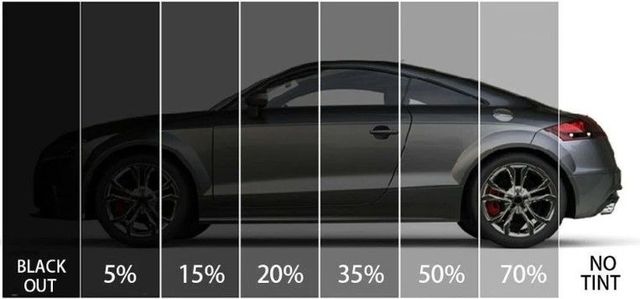Auto Window Tinting: What to Anticipate During the Installment Process
Auto Window Tinting: What to Anticipate During the Installment Process
Blog Article
Home Window Tinting Rules and Guidelines: What You Need to Know Prior To Tinting Your Automobile
Prior to waging home window tinting for your lorry, it is important to acquaint yourself with the diverse laws and guidelines that control this method throughout different states. These guidelines dictate the permissible levels of tint darkness, frequently gauged by noticeable light transmission (VLT) percents, and consist of details specifications for front windshields focused on making certain roadway safety and security. Additionally, particular territories may supply medical exceptions for individuals with qualifying problems. Comprehending these intricacies can save you from possible lawful implications, however what are the particular guidelines in your state?
Summary of Home Window Tinting Rules
Window tinting legislations are regularly based on variation throughout different territories, mirroring regional guidelines and safety factors to consider. These laws dictate the allowable levels of tint darkness and reflectiveness on car windows, guaranteeing that motorists keep adequate exposure while also protecting versus harmful UV rays and heat.
The majority of guidelines identify home window tinting based on the Visible Light Transmission (VLT) percentage, which shows the quantity of light that can pass through the home window. Usually, lower VLT percentages signify darker tints. Laws usually set apart between the front, side, and back windows, with stricter limitations put on the front windscreen to boost safety for both the motorist and various other roadway users.
Furthermore, some jurisdictions enforce constraints on the reflectivity of the color, stopping extreme glare that could hinder presence. Exceptions to these legislations might exist for individuals with specific medical conditions requiring extra sun defense. Conformity with window tinting laws is essential, as violations can result in penalties, compulsory removal of the color, and possible increases in insurance coverage costs. Consequently, it is vital for lorry proprietors to acquaint themselves with regional regulations prior to continuing with window tinting setups.
State-by-State Tint Regulations
Comprehending the specific home window tinting guidelines in each state is essential for automobile owners looking for to conform with the legislation. Each state in the united state has established its very own collection of policies governing window tinting, which can vary significantly. These regulations frequently determine the allowed degrees of color darkness, the sorts of windows that can be tinted, and any kind of clinical exceptions that might apply.
For instance, states like California have stringent limitations on color darkness for front home windows, while others, such as New Mexico, may enable darker colors. Furthermore, particular states mandate certain exposure portions for numerous home windows, including the windscreen, front side windows, and rear home windows. It is important for cars and truck owners to acquaint themselves with their state's laws to avoid prospective fines or fines.
Additionally, some states may need a qualification sticker to be put on tinted windows, indicating compliance with state legislations. Failing to stick to these guidelines not just takes the chance of legal repercussions yet can likewise affect safety and security and presence while driving. Lorry proprietors ought to conduct detailed research or get in touch with regional authorities to ensure complete understanding and conformity with state-by-state color regulations.
Allowed Tint Types and degrees
Lots of car owners might be stunned to discover that Discover More enabled color degrees and kinds vary widely across various states. Each state has actually developed its very own guidelines concerning the permitted darkness and reflectivity of home window color, usually gauged by Visible Light Transmission (VLT) percentages. VLT describes the quantity of light that can travel through the tinted windows; therefore, a reduced percentage shows a darker tint.

In addition, the kinds of tint products allowed can differ, with some states prohibiting mirror-like or metallic surfaces. It is important for car proprietors to familiarize themselves with their state's particular regulations to ensure conformity. Non-compliance can cause fines, necessary elimination of the tint, or other legal repercussions, making it essential to comprehend these laws before continuing with installment.
Medical Exceptions for Tinting
While not all states supply allocations for clinical exemptions relating to home window tinting, those that do acknowledge the necessity for particular individuals to enhance presence and convenience due to clinical conditions. Various medical conditions, such as lupus, skin cancer, and certain eye disorders, can render individuals especially delicate to sunlight. These people may require darker tints to protect themselves from unsafe UV rays and glare.

It is necessary to note that even with a clinical exemption, there may still be Recommended Reading restrictions on the degree of tint permitted. Conformity with state laws makes certain that individuals are both secured and within lawful limitations. Those taking into consideration medical exemptions need to call their regional Division of Electric motor Autos or equivalent authority to understand the demands and treatments essential to make an application for an exception efficiently.
Fines for Non-Compliance
Stopping working to conform with window tinting regulations can result in considerable penalties, which vary by state. Law enforcement companies are empowered to provide citations for automobiles that do not abide by the defined tinting regulations. These fines usually consist of fines, which can vary from modest total up to numerous hundred dollars, depending on the intensity of the violation and the state concerned.
In some jurisdictions, duplicated offenses may lead to intensifying penalties or YOURURL.com added penalties, such as necessary court looks. Non-compliance might necessitate the removal of unlawful tinting, usually at the owner's expenditure. In extreme situations, regular wrongdoers may face suspension of their automobile registration till compliance is attained.
Additionally, insurance implications may develop from receiving several citations for home window tint violations. Insurance firms may watch such offenses as an indication of riskier habits, possibly resulting in boosted costs or difficulty in insurance coverage.
To avoid these penalties, it is vital for automobile proprietors to acquaint themselves with their neighborhood window tinting legislations and ensure that their automobile complies (Window Tinting). This proactive method not only avoids lawful implications however also advertises roadway safety
Final Thought

The majority of regulations classify home window tinting based on the Visible Light Transmission (VLT) percentage, which suggests the quantity of light that can pass through the window. Compliance with window tinting regulations is critical, as offenses can result in penalties, mandatory removal of the tint, and possible boosts in insurance premiums.Recognizing the details window tinting regulations in each state is important for lorry owners seeking to abide with the regulation. These laws often determine the allowed degrees of tint darkness, the types of home windows that can be tinted, and any medical exceptions that may use.
For instance, states like California have strict limitations on tint darkness for front home windows, while others, such as New Mexico, may permit darker colors.
Report this page